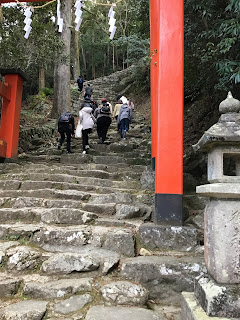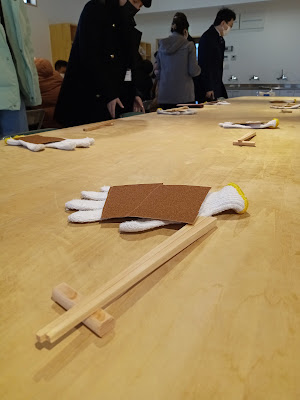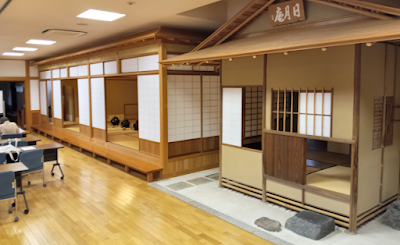Day 13, start of Kumano Kodo excursion on Sunday
Our bus stopped in Owase along the old Ise Route to the Kumano pilgrimage mountains. There we had expert guidance at the newly opened Kumano Kodo Center to see and hear the background to the people and places we would be visiting. At the first shrine visit in Kumano city we happened upon the annual ceremony by the Osaka branch of the Izumo Taisha society as they gathering late Sunday morning at the site where the deity of Izanagi is memorialized at the Hana-no-Iwaya shrine. The sound of the pacific Pacific ocean was faintly audible just across the nearby Route 42 that runs along the coastline here at Shichiri-hama (the beach of 7 Ri, about 28km). An old-style milestone showed the distance to Ise city at 144 km. This video clip was a highlight of the day that surpassed even this chance encounter with the worshipers in Kumano city. It comes later in the afternoon in Shingu after having vistied the Hayatama Grand Shrine (taisha), one of the three in this region of Kumano Kodo pilgrimage. At Hayatama our study seminar received a blessing and purification with prayers for successful mission and safety to complete our route and return without harm.
 |
| scaling the 538 steps to reach Kamikura Jinja |
Perhaps the reward for climbing the stone steps made the big vista at the Kamikura Shrine the highlight for this day of highlights. Seeing the city of Shingu (pop. 27,000 in 2021) and the ocean in the background gave climbers an expansive feeling of clarity, order, and wonder all at the same time. Visiting shrines and studying Shinto publications does not answer the many questions of the tradition and life on Earth as mortal beings, but experiencing such things puts a personal scale and texture and memory in place to revisit again and again when reflecting on the many points of inquiry. The second day will bring us to the remaining two taisha at Nachi and then inland at Hongu. Compared to pre-industrial travelers, our internal combusion engine and the smooth roads make the journey quick and comfortable; no need to put one's luggage into a backpack or furoshiki. In that sense we have low "sweat equity" invested and can devote our energy to (pictures) documenting, discussing and reflecting on the places, people, and the passage of time in these places.



Comments
Post a Comment